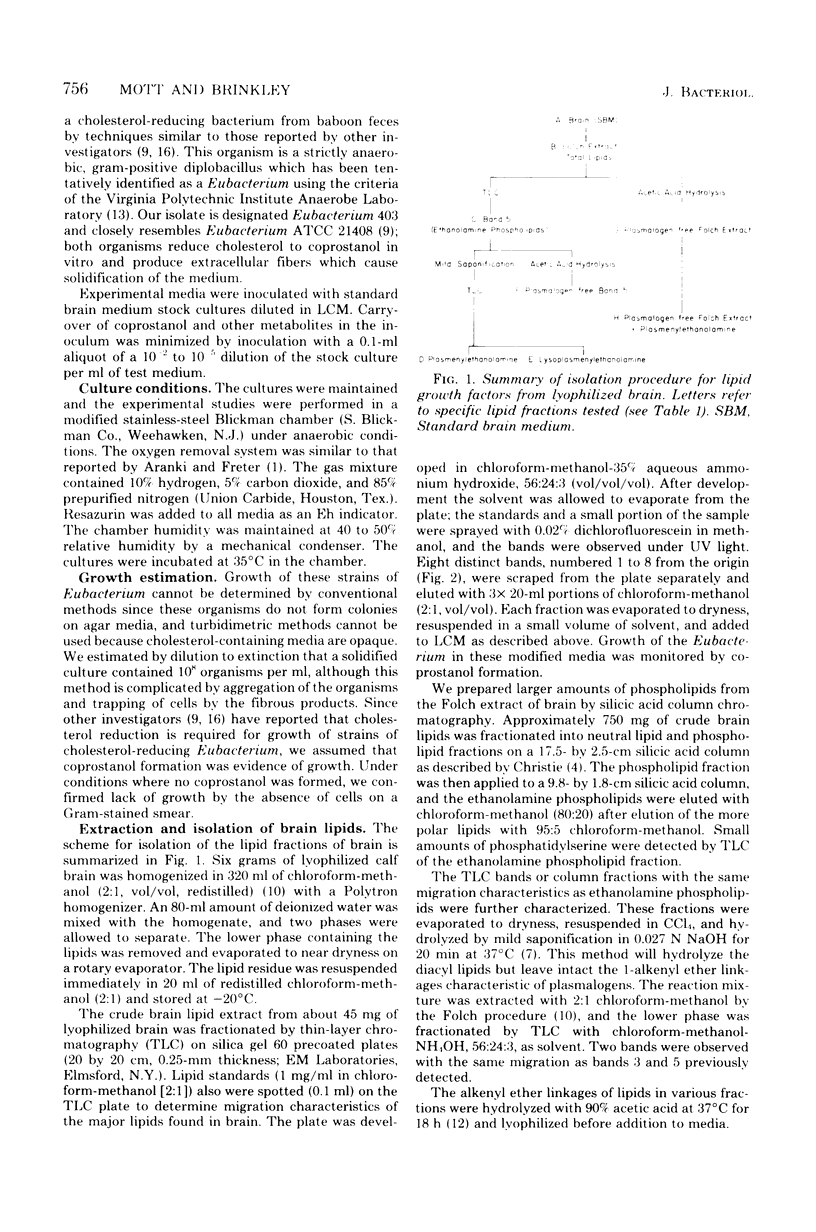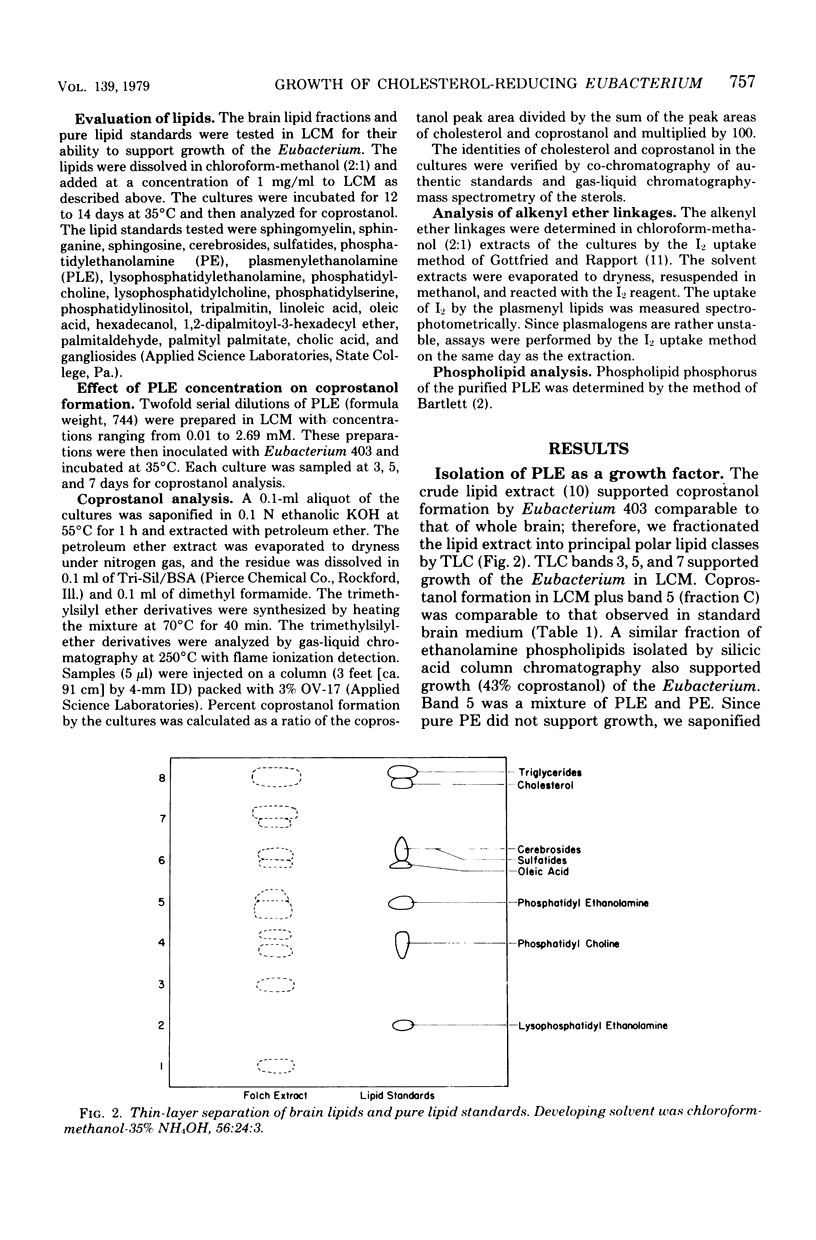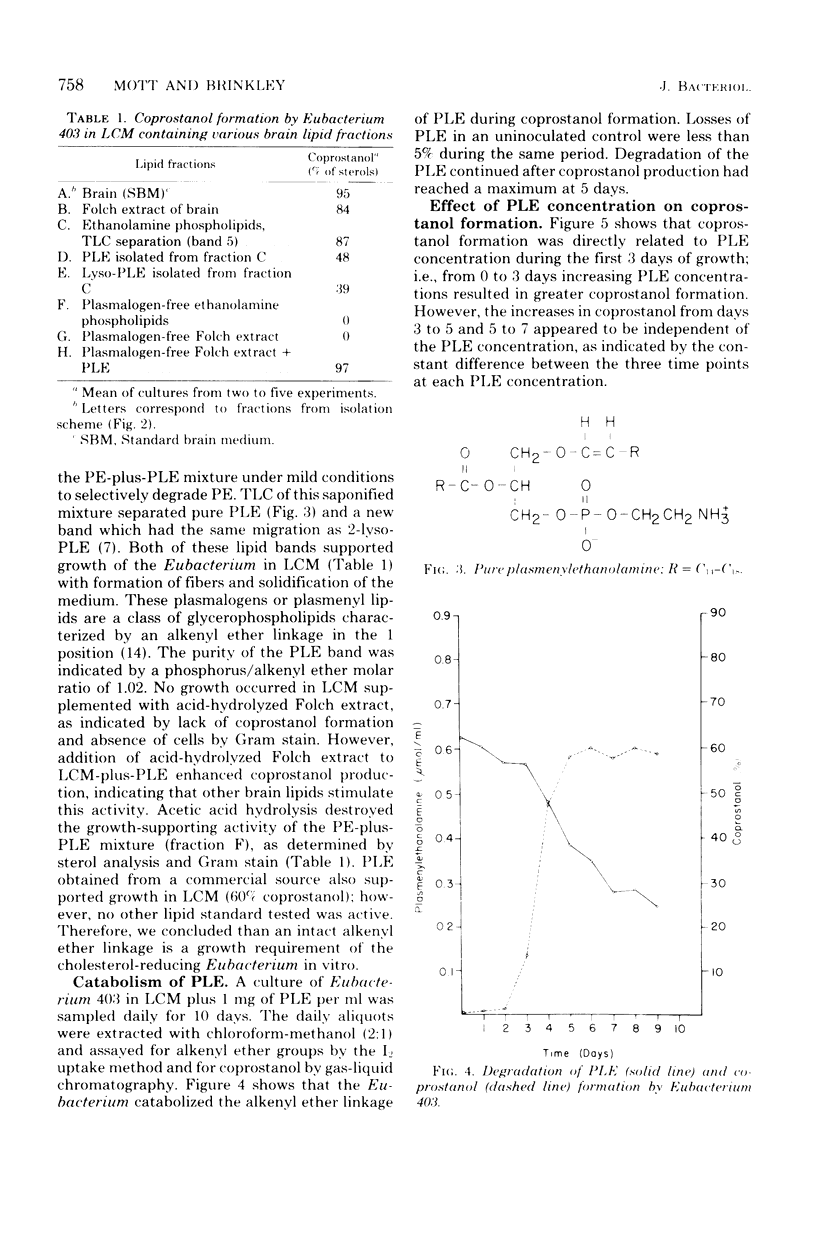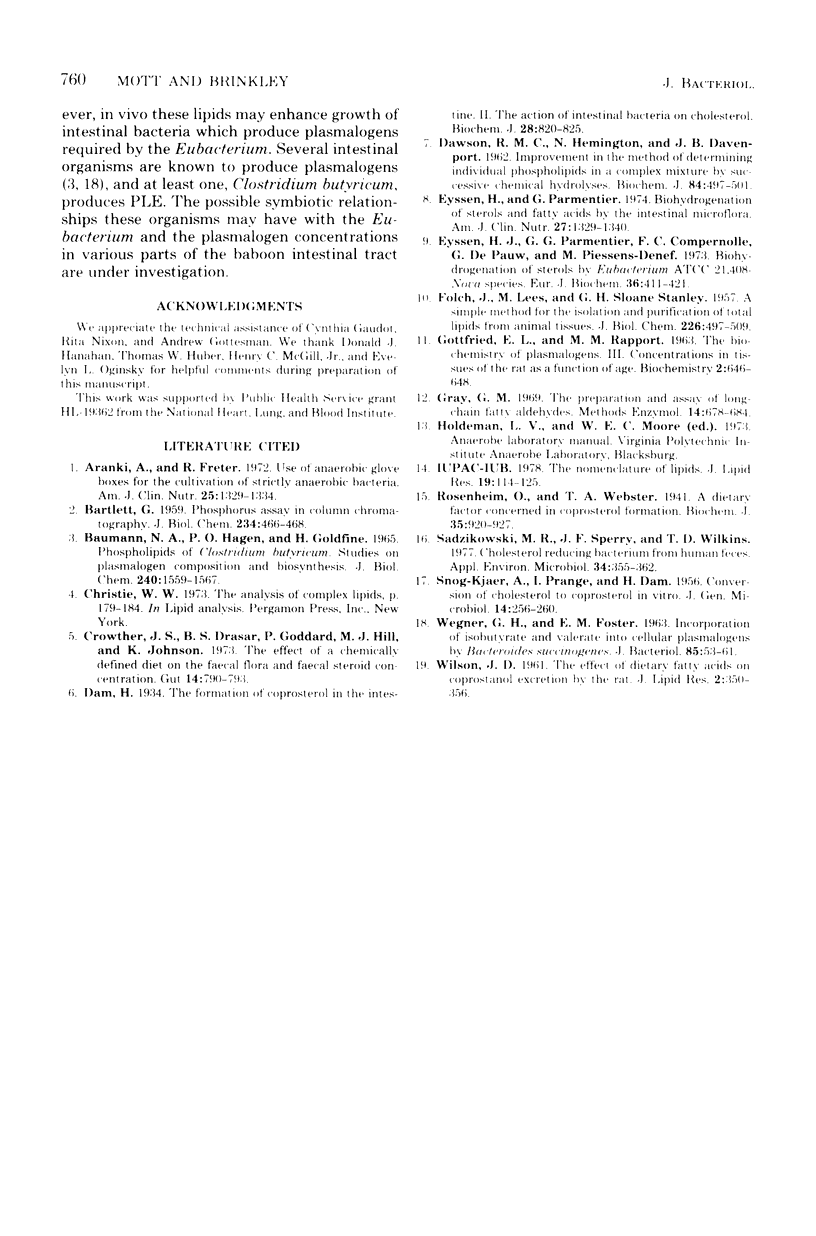Abstract
A plasmalogen, plasmenylethanolamine, is required for in vitro growth of strains of Eubacterium which convert cholesterol to coprostanol. Plasmenylethanolamine was isolated from calf brain by selective saponification of lipid fractions separated by thin-layer or column chromatography. Cholesterol-containing thioglycolate broth plus purified plasmenylethanolamine or its 2-lyso derivative supported growth of Eubacterium ATCC 21408 and a cholesterol-reducing Eubacterium isolated from baboon feces. Plasmenylethanolamine obtained from commercial sources also supported growth of these organisms, but none of a number of other pure lipids would support growth. Metabolism of the alkenyl ether group of plasmenylethanolamine occurred during growth.
Full text
PDF





Selected References
These references are in PubMed. This may not be the complete list of references from this article.
- BARTLETT G. R. Phosphorus assay in column chromatography. J Biol Chem. 1959 Mar;234(3):466–468. [PubMed] [Google Scholar]
- Eyssen H. J., Parmentier G. G., Compernolle F. C., De Pauw G., Piessens-Denef M. Biohydrogenation of sterols by Eubacterium ATCC 21,408--Nova species. Eur J Biochem. 1973 Jul 16;36(2):411–421. doi: 10.1111/j.1432-1033.1973.tb02926.x. [DOI] [PubMed] [Google Scholar]
- SNOG-KJAER A., PRANGE I., DAM H. Conversion of cholesterol into coprosterol by bacteria in vitro. J Gen Microbiol. 1956 Apr;14(2):256–260. doi: 10.1099/00221287-14-2-256. [DOI] [PubMed] [Google Scholar]
- Sadzikowski M. R., Sperry J. F., Wilkins T. D. Cholesterol-reducing bacterium from human feces. Appl Environ Microbiol. 1977 Oct;34(4):355–362. doi: 10.1128/aem.34.4.355-362.1977. [DOI] [PMC free article] [PubMed] [Google Scholar]


